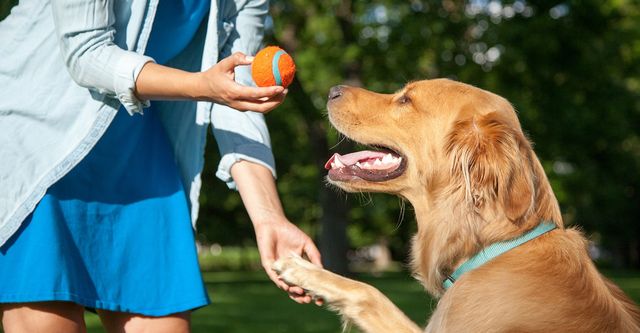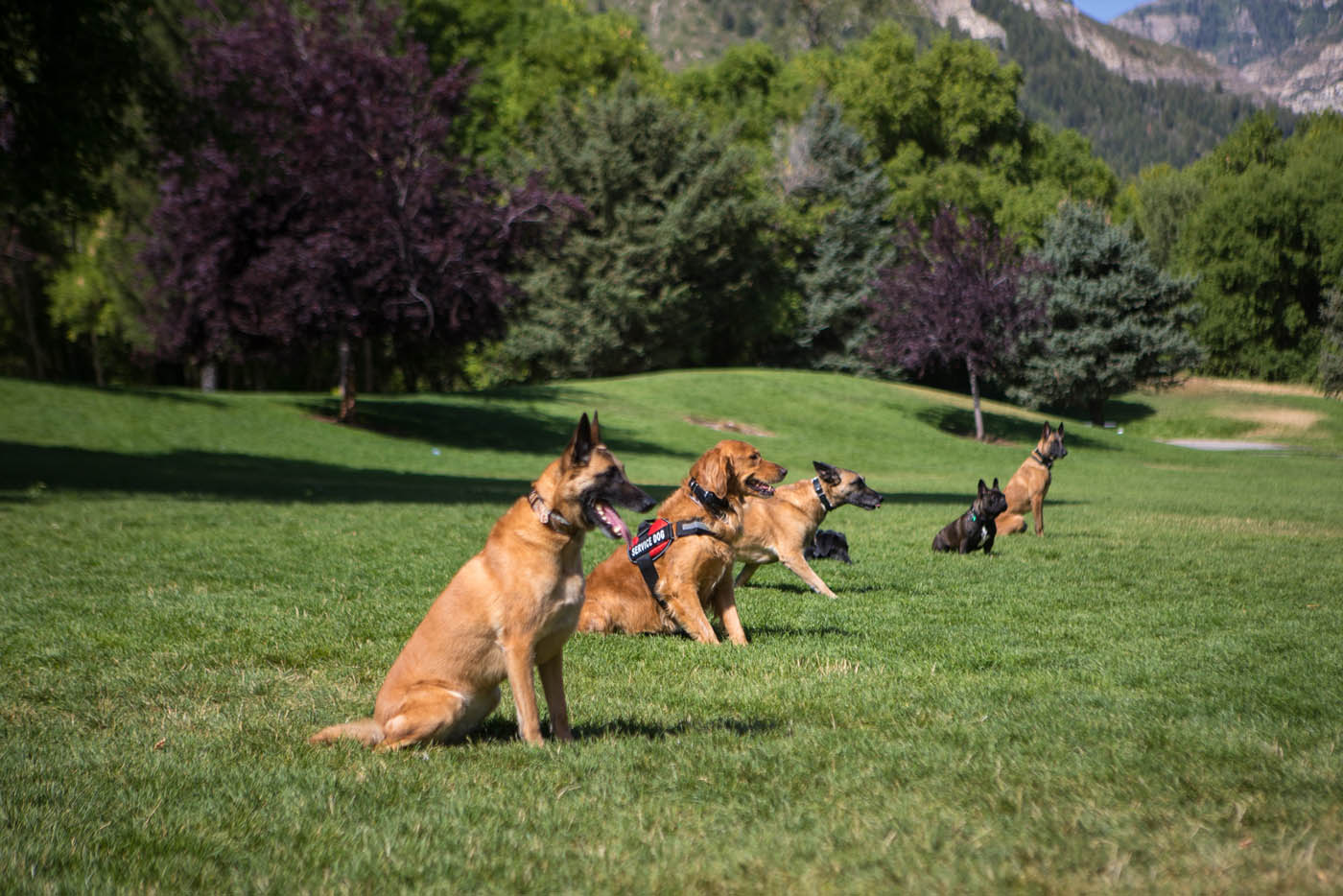Best Age to Start Puppy Obedience with Dog Training Near Me
A Beginner's Trip Into the Globe of Canine Training: Trick Insights and Approaches
A novice's journey into pet training usually discloses a complicated interplay of understanding canine actions and efficient communication techniques. New trainers swiftly find the importance of positive support and the requirement for uniformity in their approach. As they navigate with essential commands and socializing, difficulties might develop. These experiences can evaluate their persistence, yet they also existing possibilities for growth. What understandings will become they challenge common challenges and build a more powerful bond with their pet dogs?
Understanding Your Pet's Behavior
Just how can a canine's behavior expose its mood? Understanding canine actions is important for reliable training and building a strong bond. Pet dogs communicate with body language, articulations, and activities, each offering insight right into their sensations. A wagging tail normally indicates happiness, while a decreased tail might signal concern or entry.
Similarly, a canine that barks excessively may be revealing anxiousness or excitement, while a kicked back stance recommends comfort and satisfaction. Observing these actions helps owners respond appropriately, fostering a supportive environment. Additionally, behaviors such as pacing or extreme licking can suggest anxiety or pain, indicating a requirement for treatment.
Recognizing these emotional signs permits pet dog proprietors to customize their training strategies, making sure that they resolve their pet's specific needs. By comprehending their emotional states, owners can nurture a trusting relationship, ultimately leading to more effective training end results.
Essential Training Devices and Tools
A selection of crucial training devices and devices can noticeably improve the dog training experience. Newbies usually locate that a well-fitted collar or harness is important for ensuring both convenience and control during training sessions. Chains, ideally 4 to 6 feet long, supply the required advice while permitting liberty of movement. Clickers function as effective tools for noting preferred behaviors, facilitating more clear communication in between the fitness instructor and the dog.
Additionally, deal with pouches can enhance the process of fulfilling etiquette, keeping deals with available. Educating mats or marked rooms assist establish borders, urging focus throughout lessons. Toys that promote interaction, like yank toys or bring balls, can likewise be used to strengthen training purposes. In general, picking the suitable tools not just aids in efficient training yet also promotes a favorable environment, making the training trip satisfying for both the canine and the trainer.
Positive Reinforcement Strategies
Favorable reinforcement methods are extensively recognized as efficient approaches for encouraging desired habits in pets. These techniques include compensating a dog for particular actions, strengthening the likelihood of those actions being repeated. Typical incentives consist of deals with, praise, or playtime, all of which offer to motivate the canine favorably. Timing is vital; benefits need to be given instantly after the preferred actions to create a solid association.
Uniformity is also essential; making use of the very same signs and rewards assists the canine comprehend what is expected. Furthermore, varying the benefits can maintain a pet dog's passion and excitement throughout training sessions. Positive reinforcement not only enhances obedience but also promotes a trusting bond between the fitness instructor and the dog. This approach contrasts sharply with vindictive approaches, advertising a much more efficient and pleasurable training experience. In general, positive support serves as a fundamental aspect in efficient dog training approaches.
Fundamental Commands Every Canine Should Know
Basic commands develop the backbone of effective interaction between a canine and its proprietor. Understanding fundamental commands such as "rest," "remain," "come," "down," and "leave it" is vital for developing a well-behaved pet dog (Dog Training Near Me). These commands not just ensure safety yet likewise foster good manners in numerous circumstances
The command "sit" offers as a fundamental foundation, advertising patience and emphasis. "Stay" enhances self-control, permitting pet dogs to remain fixed until provided additional instructions. "Come" is essential for recall, seeing to it pet dogs return promptly when called. The "down" command helps in relaxing a thrilled dog, while "leave it" educates them to neglect distractions, improving their safety and security in daily settings.
Educating these commands with favorable support, such as treats and appreciation, urges canines to discover and react willingly. Regular practice and persistence are essential, leading the way for a harmonious connection between the canine and its proprietor.
Socializing: The Key to a Well-Adjusted Canine
Socializing is essential for developing a well-adjusted canine, as it stresses the significance of very early direct exposure to numerous environments and experiences. Utilizing positive interaction methods can significantly enhance a pet dog's capacity to adjust and thrive in different social settings. Acknowledging the indications of successful socialization is important for proprietors to analyze their dog's progress and overall well-being.
Significance of Early Exposure
When pups are exposed to a variety of individuals, settings, and experiences throughout their developmental months, they are more probable to become well-adjusted grown-up pets. Very early exposure is crucial as it assists young puppies learn to navigate various scenarios, reducing anxiety and anxiety in unique conditions. Socializing promotes confidence, permitting pet dogs to communicate positively with other pets and people. The absence of such experiences can bring about behavior problems, such as aggression or too much shyness. By introducing puppies to numerous stimulations-- like sounds, environments, and social experiences-- owners can significantly affect their future character and adaptability. Focusing on very early direct exposure plays an essential function in forming a pet dog's actions, guaranteeing they grow right into balanced and friendly friends.
Positive Communication Techniques
A selection of positive communication techniques can substantially enhance a pet's socialization procedure, resulting in a well-adjusted buddy. Participating in regular, favorable reinforcement techniques aids canines connect brand-new experiences with satisfying outcomes. Methods such as remote control training, treats, and verbal appreciation urge preferred habits and advertise confidence. Structured playdates with other pets supply important social skills, while direct exposure to varied environments, seems, and individuals promotes adaptability. Owners must additionally exercise patience and stay tranquil, as a relaxed temperament can help minimize a pet's anxiety during socialization. Routine training sessions that include fun and pleasurable this website tasks reinforce the bond between the pet dog and the proprietor, developing a structure for a relying on connection. These communications are essential for developing an all-round canine friend.
Indicators of Effective Socializing
Just how can one determine a well-socialized pet? A well-socialized pet displays calmness and confidence in various environments and around different people and pets. It responds favorably to brand-new experiences, revealing interest as opposed to worry. When meeting other canines, a well-socialized canine participates in play or remains unwinded, avoiding aggression or too much anxiousness. Furthermore, such a canine demonstrates great manners, replying to commands and cues in diverse situations. Indications of effective socialization also consist of adaptability; the dog can change its actions whether in your home, in public areas, or throughout traveling. In general, a well-socialized pet dog personifies equilibrium, sociability, and comfort, mirroring the investment in proper training and exposure during its developing stages.
Typical Training Challenges and Solutions

Leash Pulling Solutions
Many animal owners encounter the difficulty of leash drawing, a common actions that can make strolls uncontrollable and frustrating. To address this issue, trainers often advise a number of effective techniques. Utilizing a front-clip harness can lower pulling by redirecting the dog's focus. Second, showing the "heel" command motivates the dog to stroll smoothly close to the owner. When the dog stays at the proprietor's side can enhance this actions, consistent support with deals with or applaud. In addition, stopping and stalling whenever the canine draws can teach them that moving onward only occurs when they are strolling politely. With perseverance and consistency, pet dog owners can transform strolls right into pleasurable experiences for both themselves and their pets.
Excessive Barking Administration
Extreme barking can come to be a significant difficulty for pet dog owners, commonly leading to irritation and stretched relationships with neighbors. Recognizing the underlying reasons for barking is vital; pet dogs might bark out of boredom, stress and anxiety, or a demand for attention. To address this concern, owners ought to initially recognize triggers and offer mental stimulation via interactive playthings and routine workout. Constant training commands, such as "quiet," can help strengthen preferred actions. Favorable support, including treats and praise, can encourage dogs to remain calm. Additionally, creating a structured setting with assigned quiet times can be useful. In more extreme cases, seeking advice from a specialist dog trainer or behaviorist may be necessary to create a customized technique to handling extreme barking successfully.
Jumping Habits Modification
While it may seem find this endearing when a pet raises to greet people, this actions can swiftly come to be troublesome, especially when it is excessive or unwelcome. Numerous dog proprietors come across difficulties with jumping, typically resulting in damaged clothing or startled visitors. To fix this behavior, regular training is important. One effective approach includes instructing the dog a different habits, such as resting when greeting a person. Support, through deals with or praise, motivates the desired activity. Additionally, proprietors ought to avoid regarding when the pet dog jumps; instead, they need to wait for tranquil behavior before engaging. Persistence and consistency are crucial, as leaping behavior might take time to reduce, yet with proper techniques, it can be efficiently managed.
The Value of Consistency and Persistence
Uniformity and perseverance are foundational merits in the domain name of pet dog training. Effective training relies on the constant application of techniques and commands, making certain that the dog comprehends assumptions. Irregular signs can cause complication, hindering the discovering procedure. As an example, if a trainer enables a habits eventually and discourages it the next, the pet dog might become unsure of what is acceptable.
Perseverance enhances uniformity, as finding out requires time. Pets do not grasp commands or habits instantly; repeating and reinforcement are necessary. An instructor needs to continue to be fully commited and tranquil, identifying that troubles are component of the trip. Stress can bring about adverse communications, restraining development.
Via regular support and the desire to be individual, fitness instructors foster a trusting partnership with their pet dogs. This bond not just aids in interaction however likewise boosts the total training experience, causing a well-behaved companion.
Regularly Asked Inquiries
For how long Does It Generally Require To Train a Pet dog?
The duration for educating a dog differs significantly, generally ranging from weeks to numerous months. Factors affecting this timeline include the pet dog's age, breed, previous experiences, and the consistency of the training techniques used.
Can I Train an Older Canine Effectively?
Educating an older dog is undoubtedly effective, though it might require persistence and uniformity. Older dogs can discover brand-new commands and habits; nonetheless, their previous experiences and behaviors ought to be taken into consideration during the training procedure.
What Are Some Indicators My Canine Is Emphasized Throughout Training?

Should I Utilize Clicker Educating for All Dogs?
The performance of clicker training differs among pets. Some respond well due to positive support, while others may not involve. Observing each dog's actions and preferences is vital for determining the most effective training method.
Just how Do I Deal With Interruptions Throughout Training Procedure?
Handling diversions during training sessions needs patience and consistency. Progressively introduce distractions, benefit emphasis, and keep sessions short. Producing a regulated environment assists pets learn to concentrate, boosting their ability to comply with commands among interruptions.
A novice's trip into canine training commonly reveals a complicated interaction of understanding canine behavior and reliable interaction methods. A variety of necessary training tools and equipment can markedly improve the pet dog training experience. In addition, differing the benefits can keep a canine's rate of interest and interest throughout training sessions. When fulfilling various other pets, a well-socialized dog engages in play or remains unwinded, preventing hostility or extreme stress and anxiety. Indicators of a worried pet dog throughout training consist of extreme panting, more helpful hints drooling, a tucked tail, avoidance behaviors, or a lack of focus.